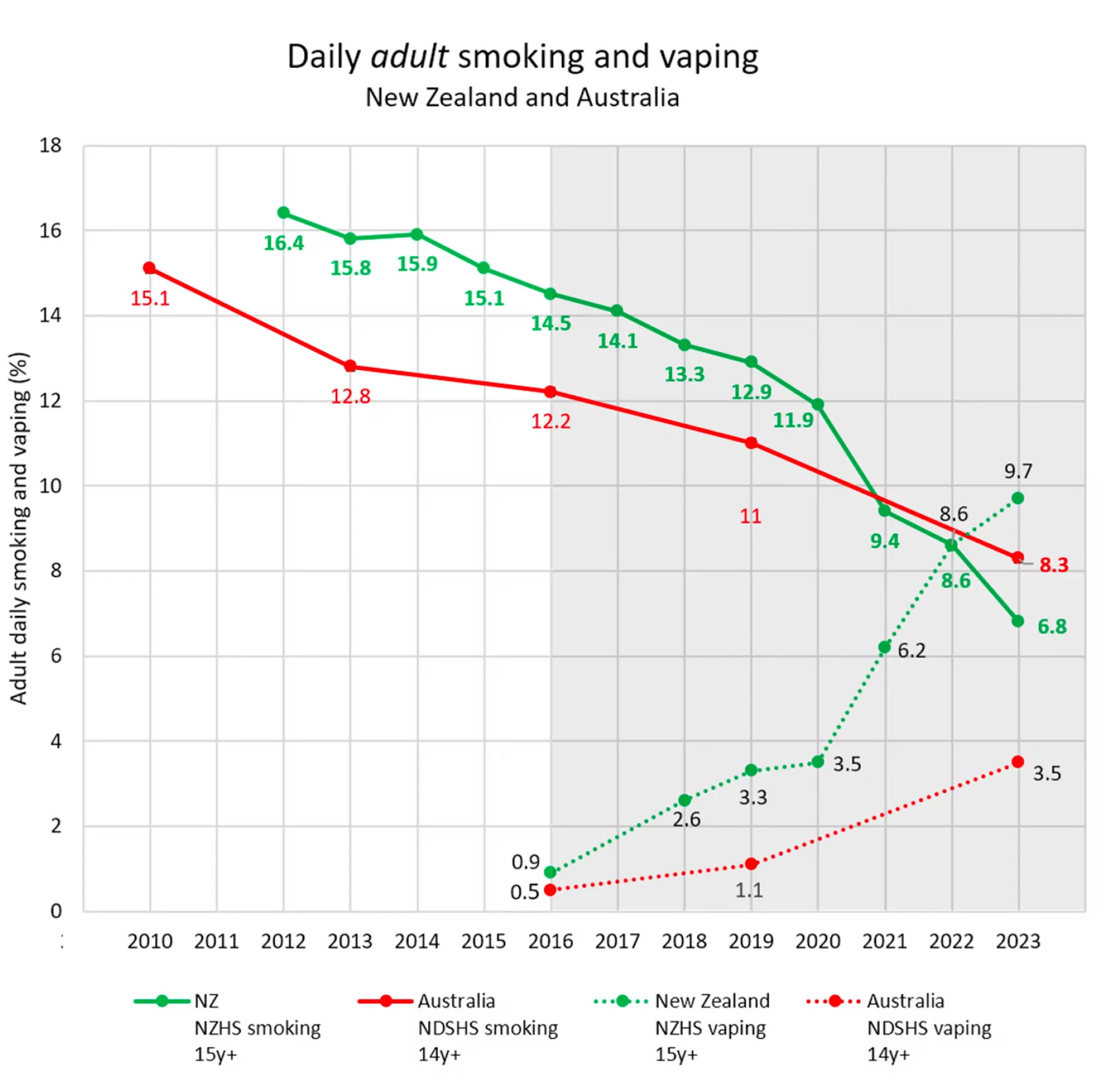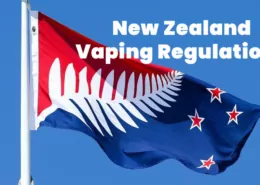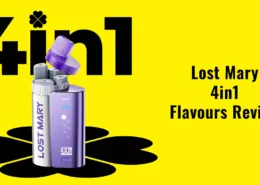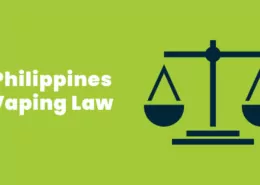Australia vs New Zealand: How Vaping Policies Impact Smoking Rate Declines
A recent study conducted by a team of Australian and New Zealand academics has found that New Zealand’s adult smoking rate has fallen faster than Australia’s over the past decade, despite New Zealand starting with a higher rate in 2013. The researchers explored potential reasons for this difference, focusing on the contrasting approaches to vaping regulation in the two countries.
In 2013, 15.8% of New Zealanders over the age of 15 smoked daily, compared to 12.8% of Australians over 14. However, by 2023, the smoking rate in New Zealand had dropped to just 6.8%, noticeably lower than Australia’s rate of 8.3%. New Zealand is now on track to reach its target of 5% smoking by 2025, although this goal may not be achieved for Maori populations.
The study, published in the journal Addiction, ruled out several potential explanations for the divergence in smoking rates, such as differences in tobacco taxation, plain packaging implementation, and the impact of the COVID-19 pandemic. Instead, the researchers highlighted New Zealand’s significantly more relaxed vaping laws as a key point of difference.

While Australia has adopted a highly prescriptive approach to vaping, New Zealand has taken a more permissive stance. Vaping products are widely available through retail outlets in New Zealand, and health authorities actively promote vaping as a tool to help smokers quit. In contrast, Australia has maintained a prohibitionist position on vaping, with Health Minister Mark Butler recently doubling down on this stance.
The study found that New Zealand experienced both a faster uptake of vaping and a steeper decline in smoking compared to Australia. Notably, smoking rates fell most rapidly among the lowest socio-economic quintile in New Zealand, which also had higher rates of vaping. The fastest declines in smoking were observed among younger age groups, who also had the highest levels of vaping.
The findings challenge the notion, promoted by some anti-vaping activists and politicians, that vaping serves as a gateway to smoking, particularly among young people. The data suggest that, if anything, vaping may be helping to accelerate the decline in smoking rates, as evidenced by the very low and rapidly falling smoking rates among young adults in New Zealand.
While the study does not definitively prove that vaping causes a reduction in smoking, it highlights the need for a more nuanced and evidence-based approach to vaping regulation. New Zealand’s Ministry of Health, for example, acknowledges that vaping is not harmless but emphasizes its potential to help smokers quit, stating that the reality “is actually somewhere in the middle.“
The study’s findings have important implications for policymakers in Australia and beyond. The Coalition has proposed shifting to a model more like New Zealand’s, where vapes would be available through retail outlets but regulated similarly to tobacco products. This approach could help to reduce the size of Australia’s thriving black market for vapes, which has been linked to violence and is estimated to be worth hundreds of millions of dollars.
As countries around the world grapple with the complex challenges of reducing smoking rates and regulating new nicotine products, the experiences of Australia and New Zealand offer valuable insights. While more research is needed to fully understand the long-term impacts of vaping on public health, the evidence suggests that a more pragmatic, harm-reduction-oriented approach may be more effective than outright prohibition in accelerating the decline of smoking.
- Is It Illegal to Vape or Smoke While Driving in Massachusetts? - August 5, 2025
- Austria Plans to Ban Disposable E-Cigarettes - August 5, 2025
- Vaping vs. THC Drinks: Which Cannabis Option Is Right for You? - August 4, 2025









